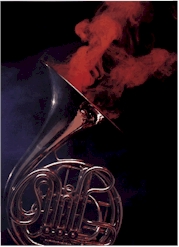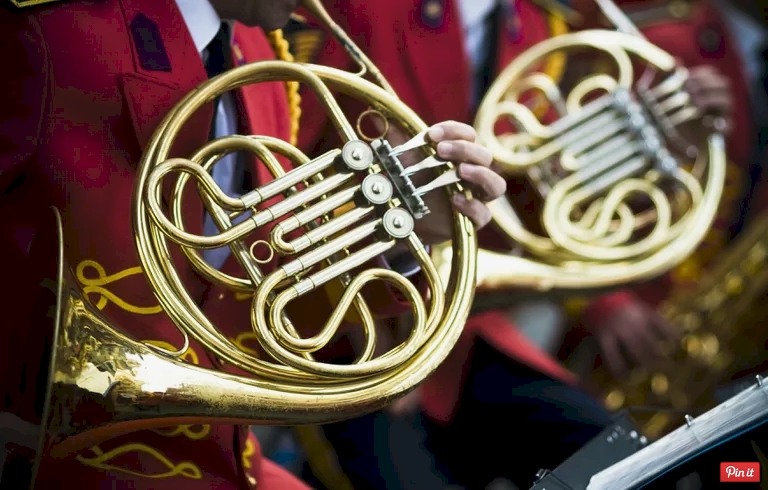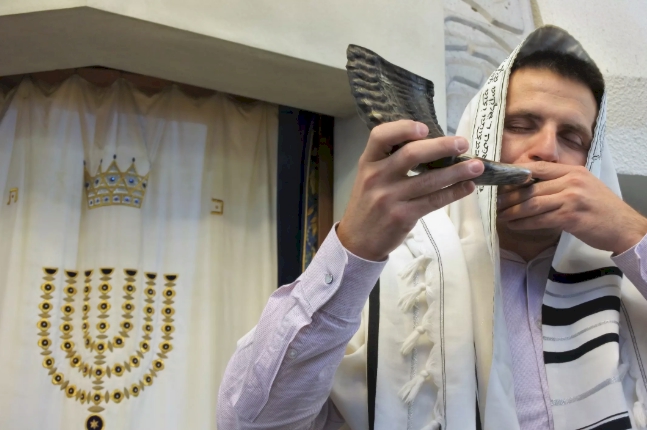









|
FRENCH HORN HISTORY
 |
|
History of the French Horn
A Musical Invention Based on Early Hunting Horns

Throughout the last six centuries, the evolution of horns has gone from the most basic of instruments used for hunting and announcements to more sophisticated musical versions designed to elicit the most melodious sounds.
The First Horns
The history of horns starts with the use of actual animal horns, hollowed out of the marrow, and blown into to create loud sounds announcing celebrations and the start of feasts, as well as for sharing warnings, such as the approach of enemies and threats. The Hebrew shofar is a classic example of an animal horn that was, and still is, widely used in celebrations. These culturally significant rams' horns are used to announce major holidays and celebrations, such as Rosh Hashanah and Yom Kippur. However, the basic animal horn does not allow for much manipulation of sound other than what the user can do with his mouth.

Transitioning From Communication Tool to Musical Instrument
Making the transition from a method of communication to a way to create music, horns were first formally seen being used as musical instruments during 16th-century operas. They were made from brass and mimicked the structure of the animal horn. Unfortunately, they provided a challenge for adjusting notes and tones. As such, horns of different lengths were introduced, and players had to switch between them throughout a performance. While this did provide some added flexibility, it wasn't an ideal solution, and horns weren't widely used.
During the 17th century, additional modifications to the horn were seen, including the enhancement of the bell end (larger and flared bells) of the horn. After this alteration was made, the cor de chasse, or "French horn" as the English called it, was born.
The first horns were monotone instruments. But in 1753, a German musician called Hampel invented the means of applying movable slides (crooks) of various length that changed the key of the horn.
In 1760, it was discovered rather than invented that placing a hand over the bell of the French horn lowered the tone, called stopping. Devices for stopping were later invented, which further enhanced the sound that performers could create.
In the early 19th century, pistons and valves, instead of crooks, were used, giving birth to the modern French horn and eventually the double French horn. This new design allowed for an easier transition from note to note, without having to switch instruments, which meant performers could keep a smooth and uninterrupted sound. It also allowed for players to have a wider range of tones, which created more complex and harmonic sound.
Despite the fact that the term "French horn" has been widely accepted as the proper name of this instrument, its modern design was actually developed by German builders and is most frequently manufactured in Germany. As such, many experts assert that the proper name for this instrument should simply be a horn.
Who Invented the French Horn?
Tracing the invention of the French horn to one person is tricky. However, two inventors are named as the first to invent a valve for the horn. According to the Brass Society, "Heinrich Stoelzel (1777–1844), a member of the band of the Prince of Pless, invented a valve that he applied to the horn by July 1814 (considered the first French horn)" and "Friedrich Blühmel (fl. 1808–before 1845), a miner who played trumpet and horn in a band in Waldenburg, is also associated with the invention of the valve."
Edmund Gumpert and Fritz Kruspe are both credited with inventing double French horns in the late 1800s. German Fritz Kruspe, who has been noted most often as the inventor of the modern double French horn, combined the pitches of the horn in F with the horn in B-flat in 1900.
(per thoughtco.com, by Mary Bellis)
|
|


